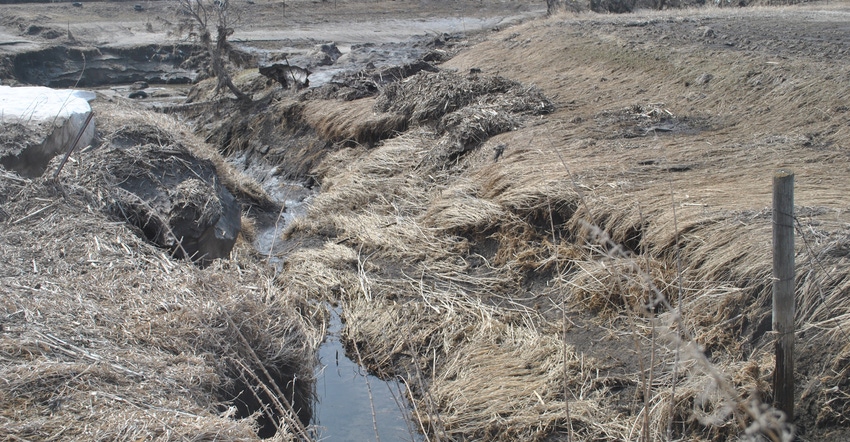April 1, 2019

The times were dire. The 50 people who had gathered were frightened for their lives as huge ice chunks, drowning cattle and a deluge of muddy, debris-ridden water struck what was left of the house they sought refuge in.
As the floodwaters rapidly continued to rise, the group eventually climbed from the upper story to the top of the roof. A pastor among them offered prayers for their safe deliverance from this disaster and for the safety of their neighbors.
This scene could have been one played out across two-thirds of Nebraska, southeast and south-central South Dakota, and into Iowa and Missouri this past spring.
The story sounds all too familiar, particularly for those caught in the path of a wall of water, mud, debris and ice downstream on the Niobrara River in Nebraska after the 92-year-old Spencer Dam was breached in the early dawn of March 14.
But the scene I’ve described is gleaned from Andreas’ History of the State of Nebraska, describing firsthand accounts of the same type of ice-choked flooding that took place in March 1881 near Green Island, Neb., a tiny northwest Cedar County hamlet of 200 inhabitants just across the Missouri River from Yankton, S.D.
The little town was situated in the lowlands. River water began to rise March 30, 1881, so many of the farmers moved their livestock to higher ground. But, on the morning of the next day, a gorge of ice in the river narrows broke upstream, and gigantic chunks of ice — carried by cold, rushing water — swamped the town. It destroyed buildings, even the Congregational Church, and sent villagers looking for shelter.
Small groups of people made their way to a few dwellings that still stood in the water. That’s when 50 people ended up on John Nelson’s roof for six hours. Nelson lost 150 cattle, eight horses, 12 mules and the frame portion of his house. Only the heavily built brick portion remained, where everyone took shelter, cringing every time a big ice chunk hit the structure.
Nelson cringed, too, hanging onto the reins of his favorite team of horses from his perch on the top of his house, until an ice chunk forced him to let them go. Finally, the small group was conveyed by a tiny rescue skiff, eight people at a time, to a nearby home that was out of the water.
A few stranded victims hanging on elsewhere climbed out on trees for safety. Others seeking shelter in a nearby barn waited for daybreak before making it out on an arduous journey across a field of floating ice chunks to the Missouri River bluffs about 4 miles away.
The little town never recovered, but those families farming in that part of the county have handed down their stories of that flood through the generations. Until only a few years ago, parts of Nelson’s flood-damaged house remained intact, still bearing the marks of ice chunks crashing into its exterior.
There was minor flooding in my own part of northeastern Knox County this past March, 138 years after the Missouri flood of 1881. The West Bow Creek swamped several farmsteads downstream.
But, compared with the loss of life and property around the state, especially for folks living in western Knox County, Boyd County and along the Niobrara, Elkhorn, Platte and Missouri rivers and their tributaries, as well as those flooded areas across the Great Plains, we were fortunate.
And, just like 1881, local folks have been heroic in their rescue efforts and ability to pitch in. This old river story of Green Island and the harrowing experiences back then remind us that Mother Nature continues to let us know, every once in a while, exactly who is in charge. And we aren’t it.
You May Also Like




